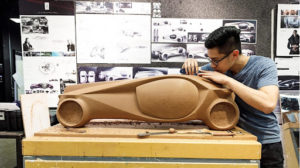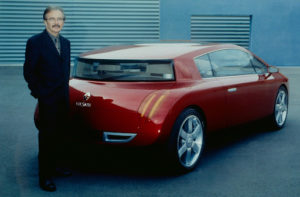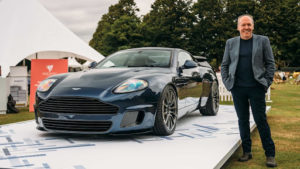When people think about car design, they typically envision the elegant and trendy exterior appearance of the most recent sports cars or luxurious sedans. But what goes into creating these stunning automobiles? Who are the masterminds behind the designs that capture our hearts and imaginations? In this article, we will take a behind-the-scenes look at the world of automobile design and meet some of the greatest auto designers of our time.

Creating an automobile design is a complicated procedure that necessitates a combination of exceptional creativity, engineering expertise, and technical skills. The design team must work closely with engineers to guarantee that their imaginative vision does not endanger the vehicle’s safety or functionality. They must, however, strive to push beyond the boundaries of what is currently achievable, developing an automobile that is both functional and visually pleasing.
Patrick le Quément

Patrick le Quément served as the Senior Vice President of Corporate Design at Renault and was accountable for designing some of the brand’s most profitable models, such as the Renault Twingo, Renault Laguna, and Renault Scenic. His designs were popular for their audacious and futuristic appearance, along with their meticulous attention to detail.
Giorgetto Giugiaro

Giorgetto Giugiaro, a prominent automobile designer with a career spanning over fifty years, was known for his remarkable contributions to the industry. His designs included some of the most iconic cars of all time, such as the Volkswagen Golf, DeLorean DMC-12, and Maserati Ghibli. Giugiaro’s sleek and aerodynamic shapes, along with innovative features such as the gull-wing doors on the DeLorean, revolutionized the design of sports cars. His works had a significant impact on many automobile designers, and he was widely recognized for his exceptional designs.
Ian Callum

Another great auto designer is Ian Callum, who spent over two decades as the director of design for Jaguar. Callum is known for his elegant, timeless designs that blend classic elements with modern features. His most famous designs include the Jaguar F-Type and the Jaguar XJ. Callum’s designs are characterized by their fluid lines and attention to detail, which give each vehicle a sense of grace and poise.
Marcello Gandini

This Italian designer is best known for his work at Bertone, where he designed some of the most iconic supercars of the 1970s, including the Lamborghini Countach, the Lancia Stratos, and the Alfa Romeo Montreal. Gandini’s designs were characterized by their sharp edges, low-slung profiles, and dramatic angles.
Peter Schreyer

As the Chief Designer for Kia Motors, Peter Schreyer is credited with transforming the company’s image from a budget brand to a stylish and modern automaker. His designs for Kia, including the Kia Soul and the Kia Optima, have won numerous awards and accolades for their sleek, sporty styling and innovative features.

However, the realm of automobile design extends beyond just individual designers. Collaborations between designers from diverse cultures and countries are yielding some of the most thrilling innovations in the industry. One instance of such a partnership is between Pininfarina, an Italian design firm, and Hybrid Kinetic Group, a Chinese automaker. Together, they are producing a lineup of cutting-edge electric cars that blend Italian design elegance with Chinese engineering proficiency.
One of the challenges of automobile design is balancing aesthetics with practicality. The car must be visually appealing, but it must also meet the needs and expectations of the target market. This means taking into account factors such as comfort, safety, fuel efficiency, and performance. It also means considering the cultural and societal values of the target market. For example, an automobile designed for a young, urban market may prioritize agility and fuel efficiency, while a car designed for a luxury market may prioritize comfort and opulence.
The role of technology in car design cannot be underestimated. Advances in materials science, 3D printing, and virtual reality have all revolutionized the design process, allowing designers to create more intricate and complex designs with greater precision and efficiency. Virtual reality, in particular, has enabled designers to create virtual prototypes of cars, allowing them to test and refine designs before a physical prototype is ever built. The future of car design is an exciting and rapidly evolving field. As electric and autonomous cars become more prevalent, designers will be tasked with creating cars that not only look great but also meet the unique challenges of these new technologies. The rise of shared mobility services and the demand for sustainable transportation solutions will also push designers to create cars that are not only functional and beautiful but also environmentally friendly and socially responsible.
To sum up, car design is a captivating and intricate field that amalgamates creativity, engineering, and technology. From the legendary designs of Giorgetto Giugiaro and Ian Callum to the groundbreaking partnerships between design firms and manufacturers, the car design industry is always advancing and striving to exceed existing limitations. As we head towards an era of electric, self-driving, and eco-friendly vehicles, the contribution of car designers will become even more crucial in shaping our lifestyles and mobility.
If you like this article, please share it with your friends.

